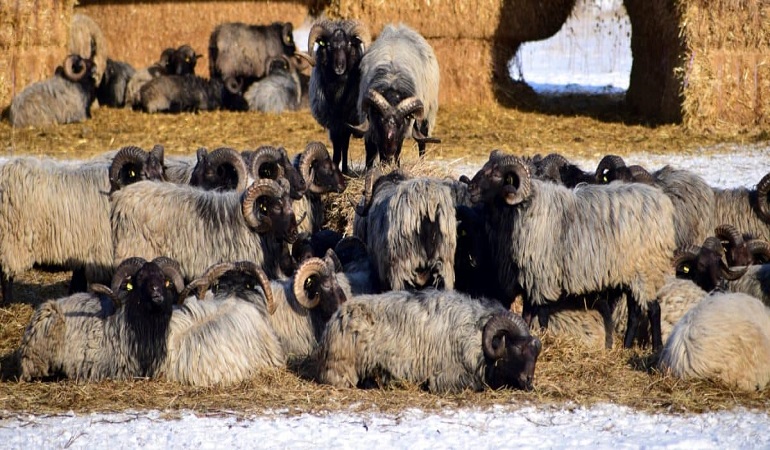Animal factory farms!
It’s certainly not something you want to think about as you reach out and grab that well-known brand of chicken fillet or beef steaks out of the chiller at your local grocery store.
In fact, meat suppliers are banking on you not questioning too closely as to how that product came about.
The sad reality is that nearly 99% of farm animals in the US are factory farmed, with the emphasis firmly on increased profits for farm owners and minimal space for farm animals.
And feeding into that equation is us as the consumer with our increasing demand for animal meat.
In this article, we look at the intensive animal agriculture industry, the facts and figures behind it, and, more importantly, why we should be concerned about the toll it is taking on the atmosphere and our planet as a whole.
What Is Animal Agriculture?
In layperson’s terms, animal agriculture or animal husbandry, as it is also referred to, is the raising, breeding, slaughtering, and use of animals often kept in confined situations for products they can produce, such as meat, dairy, eggs, or by-products, for human use.
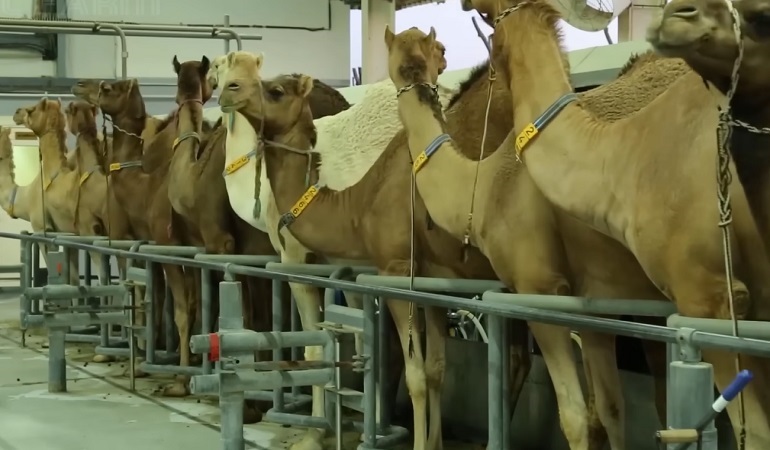
In addition, the term also encompasses all the activities around this activity to support the animals, such as disposing of their waste and transporting their feed.
Sadly, animal agriculture is a cruel business at the best of times. Still, the rise of factory farming’s popularity has exacerbated the situation further in this increasingly intensive and competitive industry.
Does Agriculture Include Animals?
In short, yes. The term agriculture broadly covers activities such as cultivating the soil to grow crops and raising livestock for food.
Interestingly enough, agriculture is also referred to as a science that deals with technologies of soil and crop cultivation and harvesting and, sadly, animal production and processing.
What Is Animal Agriculture Called?
Animal agriculture is also known as livestock farming, animal husbandry, and ranching.
But this is just a broad definition as it becomes more complicated when broken down into specific farming industries.
To simplify it, there are three broad terms currently used. Free range or grazing, Animal Feeding Operations, and Concentrated Animal Feeding Operations, better known as factory farms or intensive animal agriculture.
Animal Feed Operations (AFO)
Here a farmer keeps and raises animals in confined spaces for at least 45 days in a 12-month period. And if there is no grass or vegetation in the area during the time the farmer is raising this livestock, it is then referred to as an Animal Feed Operation.
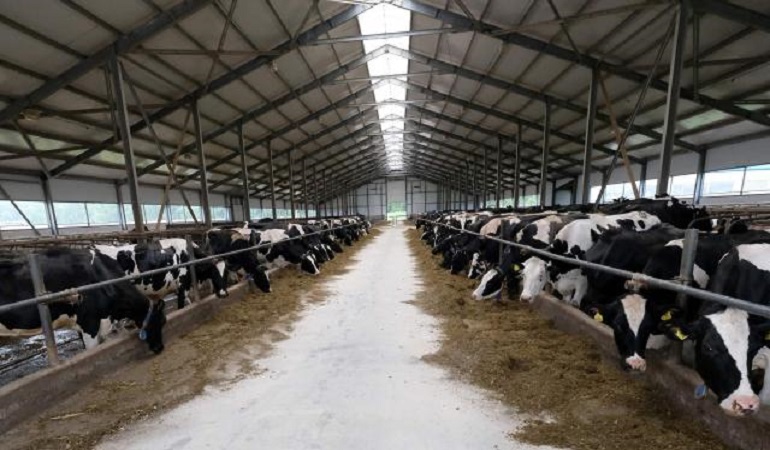
Concentrated Animal Feeding Operations (CAFO)
Also commonly known as factory farms, CAFO simply means that farms initially categorized as AFO have now become large-scale industrial, agricultural facilities for raising animals. Scholars originally used the factory-farming term to praise the increasing efficiency of the industry.
Factors influencing a facility being categorized as a CAFO depend on the type and number of animals the farm has and the way animal waste is discharged into the water supply. CAFOs typically house more animals than AFOs.
Fee Range or Grazing
Here domestic livestock can roam outside or on farm fields and consume wild vegetation.
Sadly in the animal agriculture industry, to maximize production and minimize costs, almost 99% of animals in the US are factory farmed, with around 250,000 farms killing 23 million animals a day.
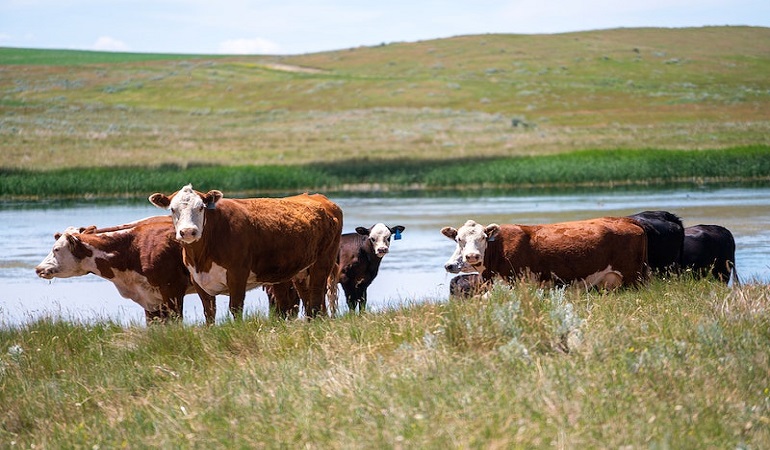
What Animal Cruelty Does Animal Agriculture Involve?
Sadly, gone are the days of rolling pastures with cows grazing and small family farms dotting the landscape.
In reality, the demand for animal products is fast, outstripping supply as a burgeoning population drives the need for these products.
And in response to that demand, livestock production has become an increasingly intensive industry across all sectors.
You’d be definitely amazed to learn how many cows are in the world, and unfortunately, with this comes unprecedented animal cruelty and animal abuse, with next to no animal cruelty laws in place to protect them.
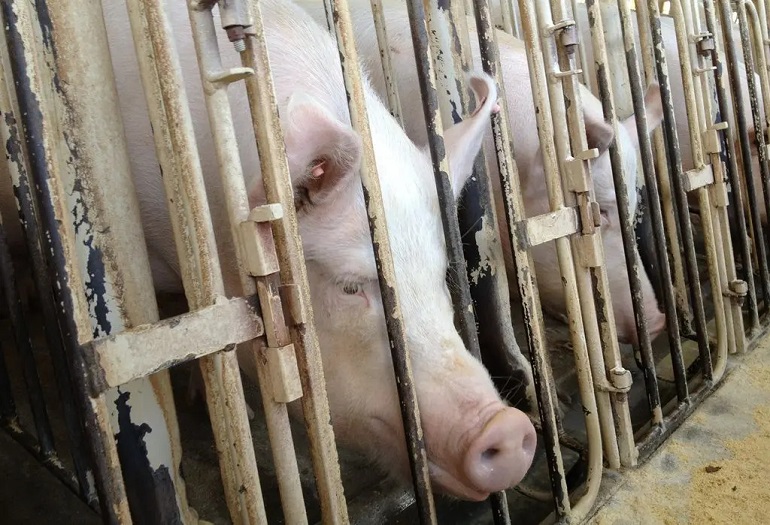
Factory Farmed Chickens
Whether a broiler chicken or a battery hen, both are subject to animal cruelty daily.
Cooped up in unnatural confines, chickens are, beyond doubt, one of the most abused animals on the planet.
According to PETA, in the US alone, every year, some 305 million chickens are raised for their eggs, and 9 billion chickens are raised for their flesh.
Shipped off to factory farms a couple of days after birth, broiler chickens are crammed into hen houses with thousands of other birds.
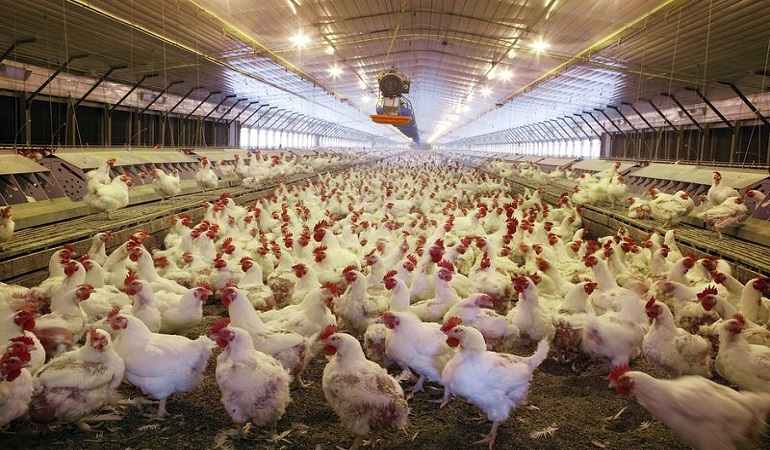
Thankfully due to regulations from the Federal Drug Administration (FDA), hormones and steroids are prohibited from being used on them. But this hasn’t stopped chicken factory farms from selectively breeding broiler chickens to grow at an unnaturally fast rate aided by antibiotics.
And because they are forced to grow quickly, these intelligent and emotional birds are predisposed to organ failure and heart attacks, with many becoming crippled by their weight.
While battery laying hens are forced to spend their lives in wire cages, generally 40 cm high but wide enough to crowd in four to nine hens.
Denied their natural behaviors, these hens are often cruelly debeaked to reduce aggression with their cage mates, while the wire floor of their cage causes problems for their feet when their claws become twisted around the mesh.
Factory Farmed Pigs
Statistics show that pigs and hogs are one of the main meat sources in the US, the state of Iowa being the top producer in the country, with about 23 million hogs and pigs.
Yet these highly sensitive, intelligent, and sentient animals are subjected to some of the worst psychological and physical cruelty imaginable on factory farms.
Here’s how. Breeding sows produce multiple litters a year, either via artificial insemination or breeding racks.
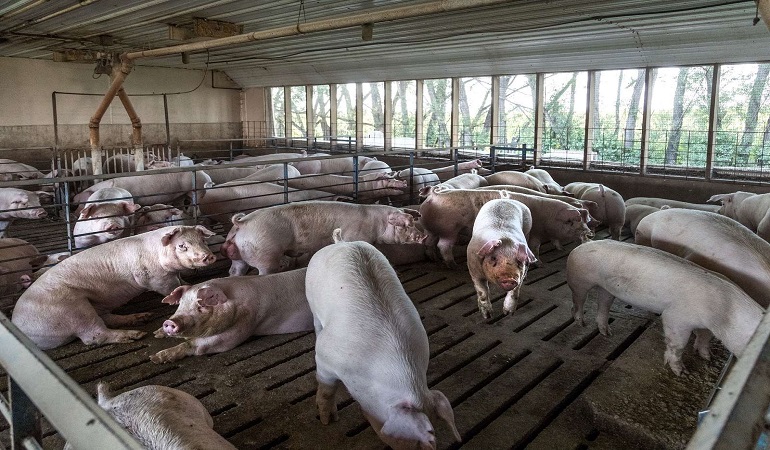
Once pregnant, the sow is then confined to a gestation crate, typically seven by two feet, with no bedding, which is slatted so their feces and urine can fall through, and there she will remain for up to four months.
Once her babies are born, she is moved along with them to a farrowing crate, where she is forced to remain on her side to feed her babies for several weeks until they are removed to the nursery.
And then the process starts all over again, for the sow, who is prevented from walking and socializing, may slowly go insane due to a lack of mental stimulation.
And as for the babies, their tails are docked at the base, their ears are notched, and their teeth are removed with no anesthesia.
Factory Farmed Cows
Just like sows, dairy cows are forcibly inseminated, but the difference is directly after birth, their calf is taken away from them so the milk they produce can be harvested for human consumption.
This cycle is repeated until the dairy cow’s body begins to break down after only a few years.
In fact, cows are known to live for up to 20 years or more, yet most factory-farmed cows are killed within six years once their ability to produce high volumes of milk begins to dry up.
Confined to indoor sheds, these dairy cows will never get to leave the close confines of the shed and step outside during their production years.
Sadly, male calves born to dairy cows are either shot on-site or sent to veal crates, while female calves are selected for dairy production.
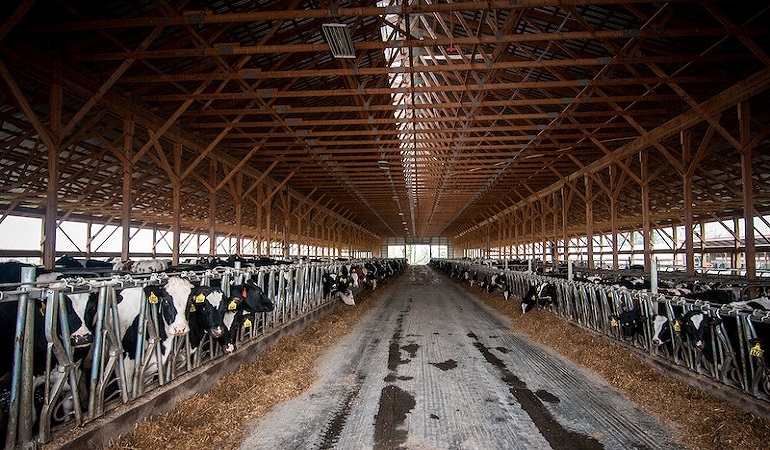
And talking of veal calves, these young animals are confined to small fenced-in areas which prevent them from walking, running, and jumping so as not to toughen up their muscles.
And then, they are slaughtered for their tender meat at just eight to 16 weeks of age.
But what about factory-farmed beef?
Referred to as beef cattle, these cows have been specifically bred to grow as quickly as possible for the meat industry.
Typically they will spend about a year on rangeland, and from there, they will be sent to a concentrated animal feeding operation (feedlots).
Here they are packed into small, crowded pens in their own excrement and fed a diet of mainly corn.
Why Is Animal Agriculture Bad?
According to the United Nations, the world population is currently 7.6 billion, and it is estimated that 200 million land animals are being slaughtered worldwide every single day to supply food.
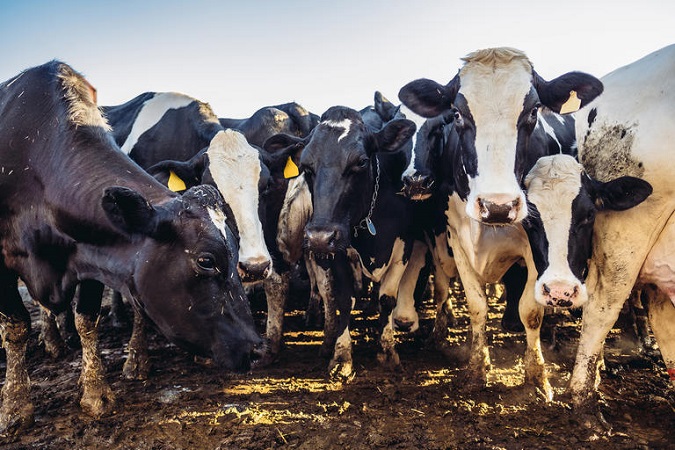
These statistics certainly don’t bode well if the world population is projected to increase by 2.2 billion to reach 9.8 billion by 2050.
As it is, the practice of intensive animal agriculture has a lot to answer for.
Intense Confinement
As the name implies, concentrated feeding operation says it all. These facilities, according to the Centers for Disease Control and Prevention, if properly managed, can provide a low source cost of meat, eggs, and milk due to the efficient housing of animals.
And therein lies the problem. For what is efficient for us humans is not so for animals in these facilities.
Housed in the smallest amount of space possible to minimize overhead costs and maximize profits, these animals are considered easier to manipulate if they are all under one roof.
Antibiotics
As said earlier, the FDA prohibits using steroids and hormones in animal agriculture, but this hasn’t stopped farmers from turning to antibiotics to promote animal growth in their livestock.
In fact, recent statistics have indicated that approximately 70% of all antibiotics in the US are sold for use in animals.

But it is not just for growth purposes that farmers turn to antibiotics on factory farms, for the unnatural living conditions mean that diseases are rampant.
Indeed most animals would likely succumb to the disease within a matter of weeks due to their poor living conditions, where in some cases, they are left to stand in their own excrement.
This overuse and misuse of antibiotics in animal agriculture contributes to the rising threat of antibiotic resistance and the emergence of antimicrobial-resistant bacteria contaminating meat products which can be harmful to humans.
Animal Abuse
Sadly it’s not only factory-farmed chickens, cows, or pigs that endure animal abuse at the hands of humans.
Ducks raised for foie gras undergo a horrific routine of force-feeding where a metal pipe is shoved down their throats several times a day to induce a fatty liver
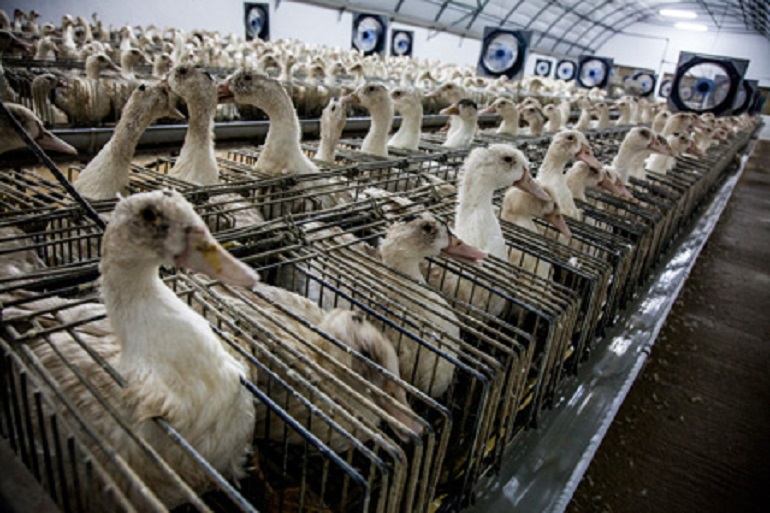
And sheep bred for wool production are forced to undergo Mulesing where, without painkillers, huge chunks of flesh are carved away from their behinds to prevent flystrike.
Species Extinction
As it is, animal agriculture occupies some 40% of the planet
And with an ever-growing human population, the demand for food will only increase, meaning more land is required for intensive animal farming practices and feed crops.
In fact, research shows that human activity has contributed to 70% of animal populations being wiped out, with animal agriculture the leading cause of species extinction.
Habitat Destruction
Species extinction and habitat destruction go hand in hand as the animal agriculture industry pollutes our land, air, and water, causing knock-on effects that affect all species on the planet.
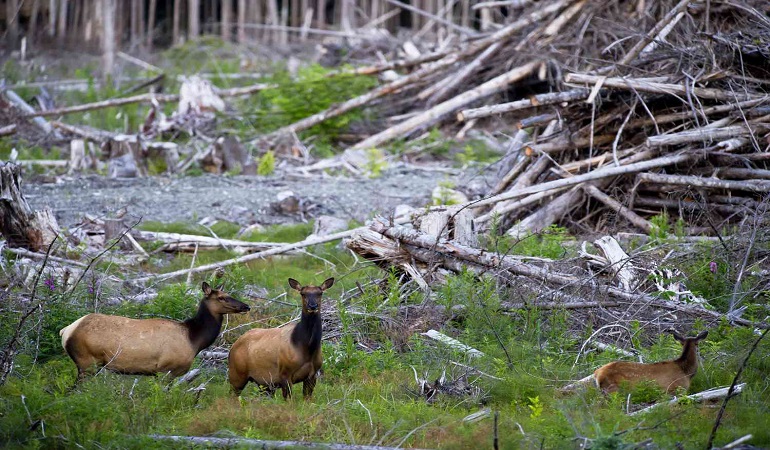
As land is claimed to grow crops to feed farmed animals, natural wildlife habitats are eroded, with approximately one acre of land cleared every second for human use.
How Does Animal Agriculture Affect the Environment?
Livestock farming is the world’s largest user of land resources, with animal-feed croplands and grazing lands accounting for almost 80% of all agricultural land.
Here is a brief overview of how animal agriculture affects the environment
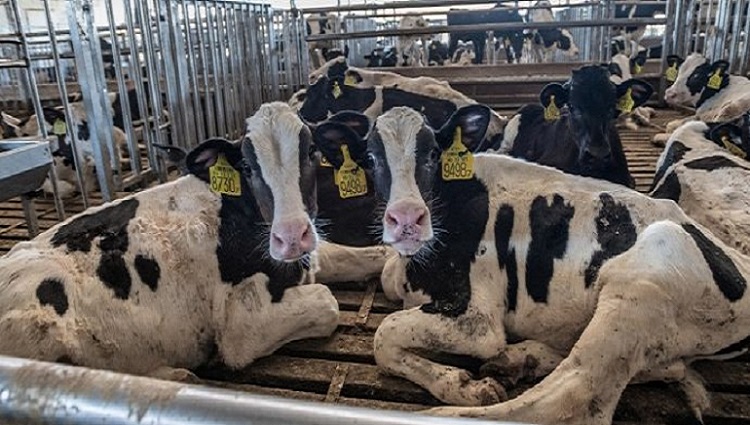
Land Use
Beef farming, for instance, requires 20 times more land per gram of edible protein than growing crops such as beans or peas.
Water Use
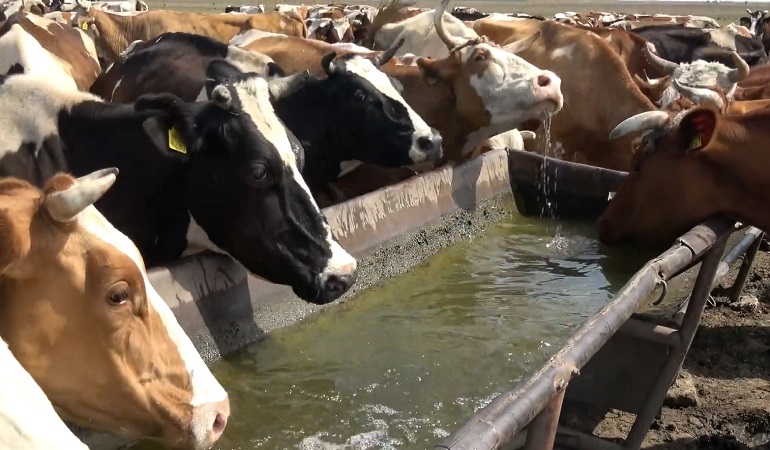
In the US, for example, half of the water used by the nation is for irrigating feed crops, drinking water for animals, and cleaning filthy enclosures on animal farms.
Greenhouse Gas Emissions
The animal livestock sector is a major contributor to almost 15% of the total global greenhouse gas emissions, which is far more than transportation emissions combined.
Deforestation
Sadly with the demand for food comes the loss of natural ecosystems. Forests are cut down or burned to create space for livestock and their feeds. Such as grazing and feed crop production cause nearly 70% of vegetation loss in the Amazon Rainforest.
Water Pollution
It is not only the amount of water used in livestock farming that is of concern. But the amount of water used ends back up in the environment.
Most of this water often contains harmful substances such as antibiotic residues and pathogens such as E.coli from animal waste.
This pollution can result in massive die-offs of fish and other marine life.

Air Pollution
One of the greatest environmental risks is air pollution caused by animal agricultural activities. Factory farms, for instance, release ammonia, nitrous oxide, carbon dioxide, and hydrogen sulfide, much of which comes from animal waste.
The US Environmental Protection Agency indicates that the animal agriculture industry is the largest source of methane emissions in the US.
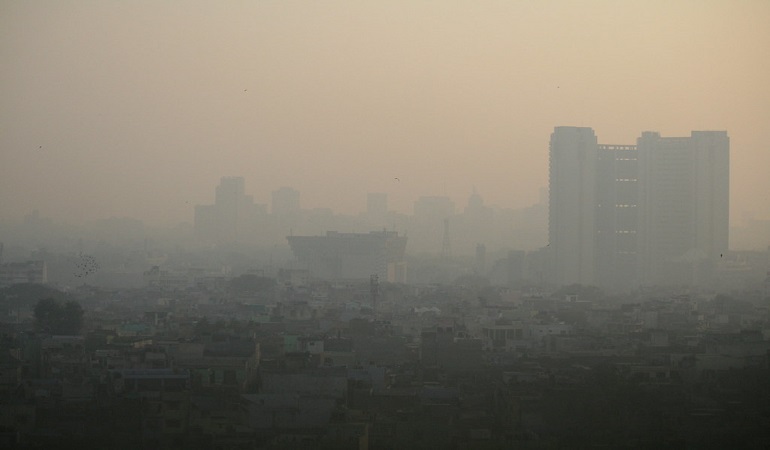
Climate Change
Besides being responsible for huge sources of greenhouse emissions and global warming, animal agriculture is associated with clearing vast areas of land such as forests, wetlands, and grassland to provide land for feed crops and rotational grazing.
And as a result, all these activities combined have contributed to climate change and a big climate crisis.
Again, animal agriculture is one of the main driving forces behind biodiversity loss across the planet, as more land is required for feed crop growing and grazing.
In a report released by the United Nations Environment Programme in 2021, agriculture practices were specifically mentioned as a threat to 86 percent of species currently facing extinction.
Ocean Dead Zones
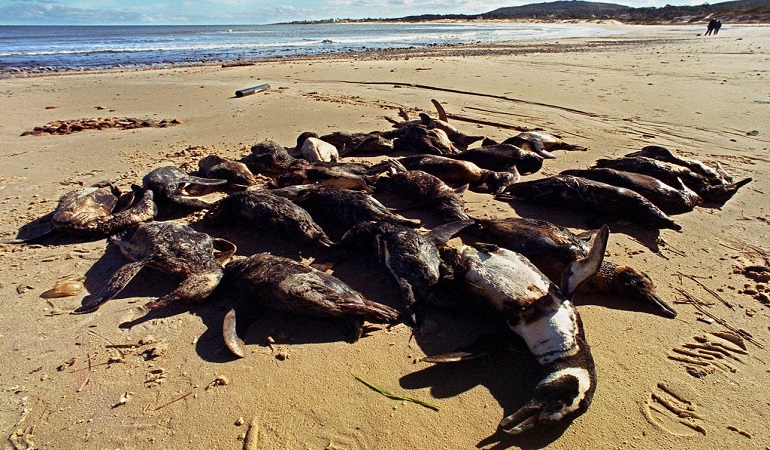
It’s not just on land that the effects of animal agriculture are felt, for the phosphorous and nitrogen runoffs from factory farming deplete water bodies such as oceans, lakes, and rivers of oxygen.
This results in aquatic life and flora changing their behavior to reach more oxygen-rich areas.
Contamination of Waterways With Manure and Fertilizer Runoff
In short, all cycles of animal agriculture affect the waterways of the world, leading to water pollution.
It ranges from feed crops using pesticides and fertilizers to excess manure loaded with veterinary medicines and intensive animal agriculture operations. This creates a chemical cocktail being washed into our waterways and contaminates them. This, in turn, leads to human health risks, such as heart disease.
Economic Costs
As such, the low cost of intense agricultural animal farming does not outweigh its high environmental price tag.
From deforestation to polluting the air and waterways to contributing to greenhouse emissions and climate change, it is estimated that it costs the environment about $3 trillion every year.
Animal Agriculture: Is it Harmful to Human Health?
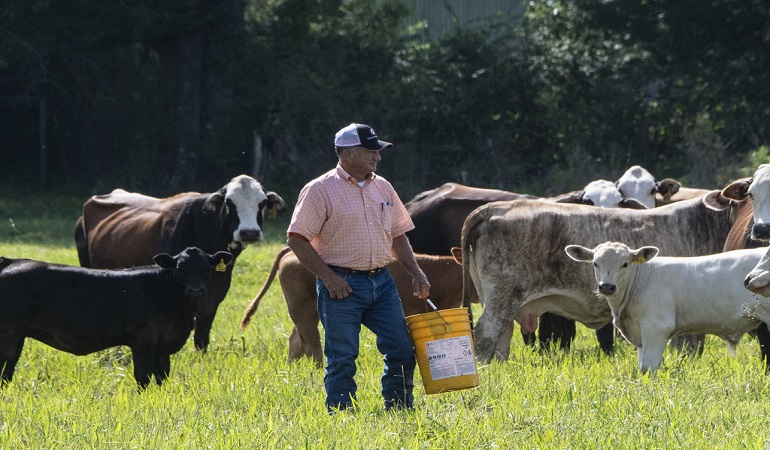
In many countries worldwide, intensive animal agriculture operations near human settlement areas have raised concerns about human health implications.
Here’s why.
Pandemics
The overcrowded and unsanitary conditions often accompany factory farms provide the ideal breeding ground for spreading diseases.
Diseases, specifically zoonotic infectious diseases, can be transmitted from animals to humans.
It is estimated that three out of every four new emerging infectious diseases in people come from animals.
The majority of diseases that have caused pandemics or epidemics in recent years are AIDS, swine flu, MERS, SARS, Zika, Ebola, avian flu, and Covid 19.
And according to expert bodies such as the Department of the World Health Organization, it is predicted that as long as human consumption of food relies on animals, pandemics are inevitable.
Antibiotic Resistance
According to a report published by the CDC, antibiotic resistance is one of our time’s greatest public health challenges.
And one of the leading causes is the overuse of antibiotics in the animal agriculture industry, which ends up in our bodies either through drinking water contaminated with animal waste or consuming animal products.
This, in turn, triggers a cycle in humans and animals as their bodies, continually exposed to antibiotics, become immune to their infection-fighting properties and thus become resistant to the drug.
Even more worrying, though, is that this results in the continual need for more potent antibiotics to fight off the increasing amount of antibiotic-resistant bacteria.
Unfortunately, the overuse of antibiotics by farmers in factory farming is so prevalent that it is hard for consumers to know whether the animal product they are buying is affected by this practice or not.
Worker Health
According to statistics, US workers in the animal slaughtering and processing industry have a higher incidence rate of illness or injury than the average private worker.
Apart from severe physical injuries to workers in animal processing plants, such as amputations, fractured fingers or bones, and head trauma, there are also many other hazards they face daily
Examples of this are exposure to high-level noises, slippery floors, and chemicals and the risk of contracting the bacterial infection brucellosis.
And factory farm workers are no different due to their long-term exposure to animal waste and ammonia.
In fact, research indicates that factory farm workers are at an increased risk of respiratory diseases such as chronic bronchitis and bronchial obstruction.
Animal Agriculture Facts and Statistics
- The world now produces almost 800 million tonnes of milk yearly, which is more than double the amount fifty years ago.
- Globally, pork is the most popular meat, but poultry production is increasing the most rapidly.
- The world now produces more than three times the quantity of meat than it did five decades ago
- Cows around the world produce approximately 150 billion gallons of methane every day.
How Many Animals Die Each Year Because of Animal Agriculture
Current estimates put the figure at a staggering 80 billion land animals slaughtered annually for humans meat consumption.
Animal Rights in Agriculture
Sadly in animal agriculture, animals do not have any rights as they are considered property for profit and, as such, afforded no legal protection.
In the US, for example, no single Federal agency law governs the treatment of animals used for food while on farms, that is, until they are transported off the farm.
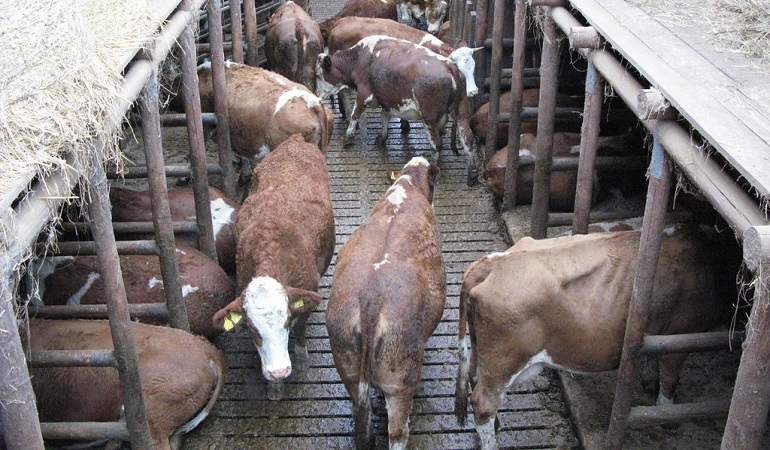
There is the Twenty-Eight-Hour law that regulates when animals must be given food and time to rest while being transported. But this law only applies to livestock and not poultry.
And then there is the Humane Methods of Slaughter Act which requires the humane treatment and handling of food animals at the slaughter plant and a quick and effective death.
Today many organizations of animal advocates and animal rights activists are working hard to end factory farming and encouraging consumers to source products through more humane operations.
How Can You Play Your Part?
Every little bit helps, no matter how small the efforts are. So here are some effective ways to get you started.
- Opt for a plant-based diet. If you can’t entirely give up your meat, begin with Meatless Mondays and then adapt to meatless meals as often as possible.
- Look for milk alternatives such as soy, almond, oat, and rice milk, and try out non-dairy spreads and cheeses.
- Stop supporting factory farming. Do some research into where your meat supplier obtains their meat products.
- Get involved. Volunteer at a farm animal sanctuary or join an animal advocacy organization.
FAQs
What Is the Future of Animal Agriculture?
One factor that is fast-growing traction in the food industry that may very well determine the future of animal agriculture is cultured protein also referred to as a cultivated or lab-grown protein.
Lab-grown meat, such as a beef patty grown from bovine stem cells, is already a reality, as is chicken and seafood.
Cells taken from a single cow can produce up to 175 million quarter-pound burgers.
And while cultured protein is still in its infancy, it could very well be the food revolution of the future.
What Pandemics Are Caused by Animal Agriculture?
In recent years the majority of diseases caused by animal agriculture that has led to pandemics are AIDS, swine flu, MERS, Zika, Ebola, SARS avian flu, and Covid 19.
How Much Land Does Animal Agriculture Use?
Worldwide, animal agriculture takes up 26% of ice-free land for livestock grazing, while an additional 33% is used for livestock crop production.
Conclusion
Sadly, as debate rages on animal factory farming, so does the demand for meat and dairy products.
But one thing is certain. The current and projected impacts of animal agriculture on the future of our planet Earth do not bode well for us.
Our consumption of meat and other animal products from intensive animal agriculture farming methods simply cannot continue at the current rate if climate change and animal deforestation are to be addressed.
But more importantly, animal factory farms and their accompanying inhumane practices on animals need to diminish.
It now rests in our hands to make and be that difference!


